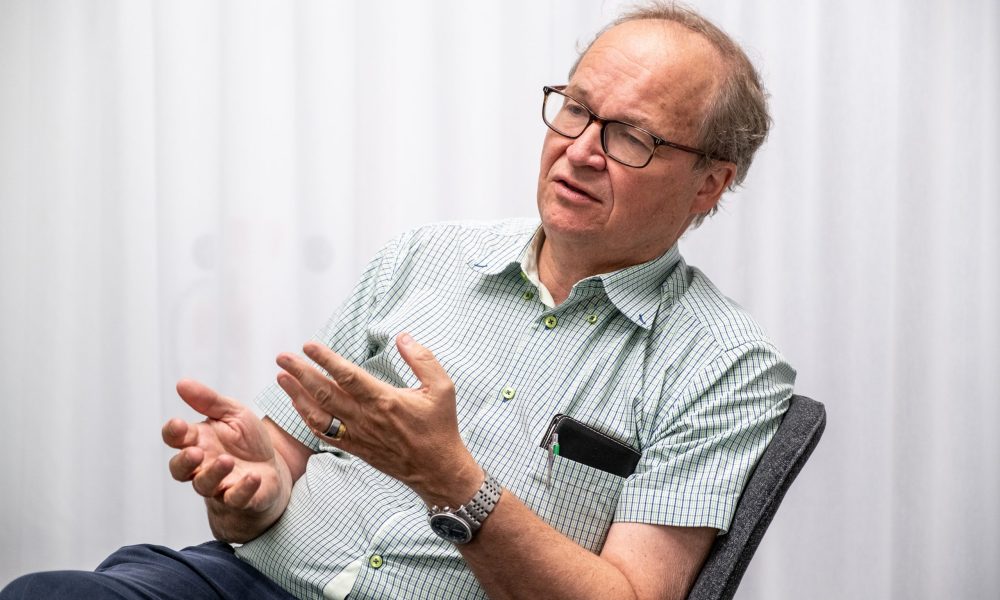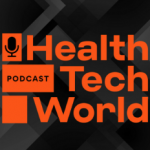
The developer of Bluetooth speaks to Health Tech World about the power of light for improving the health of the global population.
Tord Wingren is a Swedish inventor, entrepreneur, and scientist, recognised as the developer of Bluetooth during his tenure at Ericsson Mobile Communications. It was while working for Ericsson that he discovered the importance of light for the health of the human body – an area which would eventually become his life’s ‘passion’.
The importance of natural light in synchronising our biological clocks is now widely recognised, with scientists recommending that we spend at least four hours a day outdoors for optimal health. But in today’s world, few are able to obtain this, with the majority of our time spent in front of blue light, rather than sunlight.
This was the basis for Wingren founding BrainLit, a health technology company working to bring the benefits of natural light indoors. Its patented Biocentric Lighting technology, simulates the most important aspects of daylight to improve health and well being.
The company provides personalised lighting for professional sports teams, employers, education and healthcare providers, with promising effects. Its user data shows a 15 per cent improvement in deep sleep, a nine per cent jump in general readiness, and an average 11.8 per cent increase in cognitive performance as a result of using the technology.
Wingren spoke to Health Tech World about the role Biocentric Lighting can play in global health and his lifelong interest in how technology can help us as human beings.
Could you start by explaining the motivation behind BrainLit?
It actually goes back to 1988 when I was working on a customer project for Ericsson, to extend the life length of fluorescent lamps. This specific customer was also interested in how light could affect our health.
I bumped into him at a later date and got an invitation to a scientific conference, where scientists from all over the world were sharing studies which had been done on the health aspects of light.
It inspired me a lot. Through this I understood that daylight was very important, but at that time there wasn’t anybody who was thinking about how that could be imitated indoors.
I found a system which could actually do that. It was me and a couple of professors who started the company and since then, it’s been my life, it’s been my passion, actually.
For anyone who isn’t aware, why is natural light so important for our health and wellbeing?
The direct effect that we get is a much better sleep quality. Since the 2017 Nobel Prize winning discoveries on the workings of our biological clock, we now have more widespread knowledge about the importance of synchronisation of hormone cycles in the human body.
Two examples are melatonin and cortisol cycles, but you have many more hormone systems in the body and there is still a lot of research being done.
There’s also now a consensus in what we call circadian lighting, which has led to that standardisation work on what kind of light we actually need to be able to call it healthy lighting and to get much better health aspects indoors. We have a lot of studies showing that we have 15-20% better sleep quality thanks to a circadian lighting indoors.
Many of us are not getting enough natural light in our modern lifestyles, do you think this could be contributing to the rise in chronic diseases?
Absolutely. It’s a big contributor. The problem is just that if you go into a room with bad air you recognise it directly, but our human senses are not that well tuned when it comes to light because it’s a dose effect, so we don’t sense it directly.
This is also the reason why we didn’t discover the biological clocks until very late, or understanding that daily rhythm is so important.
We know the effects of jet lag, for example, if we change time zones by a few hours. The body really needs the synchronisation that daylight gives us.
So how does Biocentric Lighting work?
Biocentric Lighting is essentially circadian lighting with a big boost on it. We are also able to personalise the light, because we all have different sensitivity to light – some people are night people, some people are early morning people and so on.
The modelling of the biological clock, which we have done, is very important. The more data we have, such as age and sex, the more personalised light we can give, as well as historical data, such as how you slept yesterday, for health tracking.
A good example is professional sports people, so if they have a match at 8pm they don’t want melatonin to be produced. It’s a model which is improved all the time with more data.
What potential impact do you think this technology could have on the health of the global population?
There are so many diseases and sicknesses that we have not understood are due to the negative impacts of aesthetic lighting.
That is the most worrying thing for me. I didn’t know even at that time that the consequences could be so detrimental if our hormone systems were not in sync.
Sleep deprivation is one impact of this, which has detrimental effects on the immune system. Melatonin is actually very important to have in sync because of its effect on sleep quality, but it actually relates to cancer and other diseases, such as dementia, as well.
We are not claiming that all of these things, this is what science is doing but I’m very clear on the substantial health benefits that we can see.
We know, for example, that we can reduce the number of falls in elderly care by more than 40 per cent This is of course, a big factor for public spending, but the most important thing as I can see is that we are helping improve life for people. By improving life, we are also prolonging their life.
What data do you have to support this so far?
We have a number of school studies that show cognitive improvements in the range of 10 – 15% per cent which is substantial. We think education is extremely important so that our children are able to work in better conditions for learning, and we know memorising effects can be as big as 30 per cent with the right light.
We are also seeing benefits in productivity in sickness levels. One company had an almost 30 per cent improvement in the number of sickness days during the year and the big change that they made was to invest in our light system.
Science is now saying that you should at least have four hours of good daylight per day. We have a strong belief that we can do a lot of good for office workers, employers, schools and healthcare settings, where people have to spend a lot of time indoors.
SAD lamps are often used these days as a substitute for natural light during the winter months? What are your thoughts on these? Do they offer similar effects?
We have not yet seen any which are that good yet, unfortunately. There’s so many aspects to light when it comes to being able to mimic daylight. One thing is that there should be no flickering at all.
The colour rendering is also very important, we think. Having daylight indoors should mean that the colours indoors should be identical to the colours as you see outdoors. And if it doesn’t do that, then I would say the quality of the light and the source may not be that good.
What is your vision for BrainLit in five or 10 years time?
My vision is that we become a world standard and that we can help everybody, but it’s a very big ambition. The first milestone to this is to set the first circadian standard and then on top of that we see the possibility for a licensing concept.
We are partnering with lumina manufactures and believe that it’s affordable technology that is comparable with premium, static light.
We are not the masters in interior design, other people are, so we can partner with them, tell them what we would like to see in terms of light source and they can design lamps around it which they will sell it with our system in.
We are definitely not a competitor with the lamp industry. Our core is really the knowledge about the human being and being able to provide personalised light recipes.
So, eventually everyone would have Biocentric Lighting in their homes as standard?
Yes, exactly. And you can also take your light profile with you and have it connected to your calendar, so it knows for example, if you have training, when you want to wake up, go to sleep. You can then use it to follow your biological clock and track your health.





